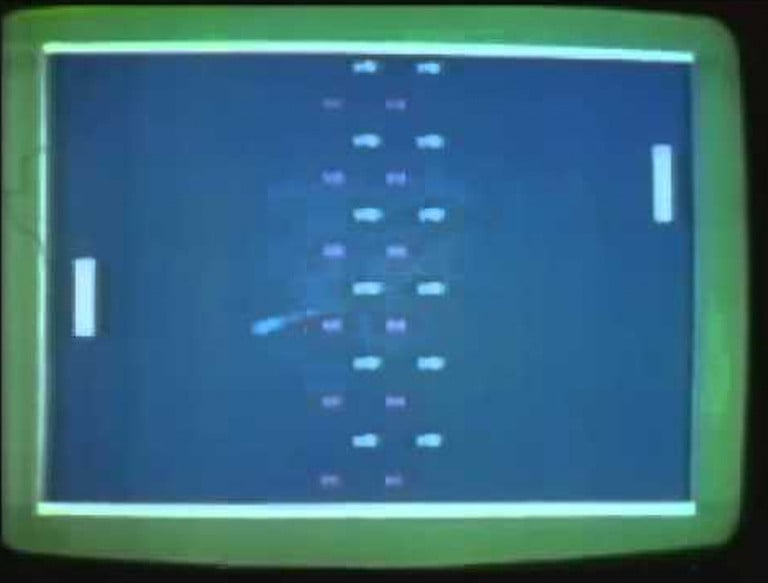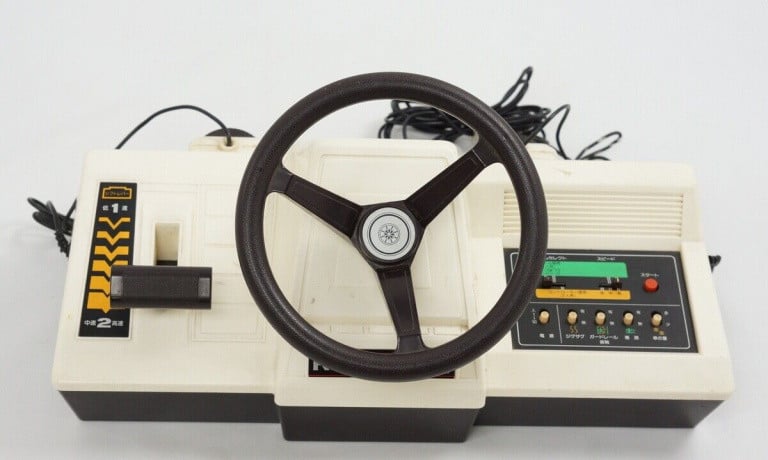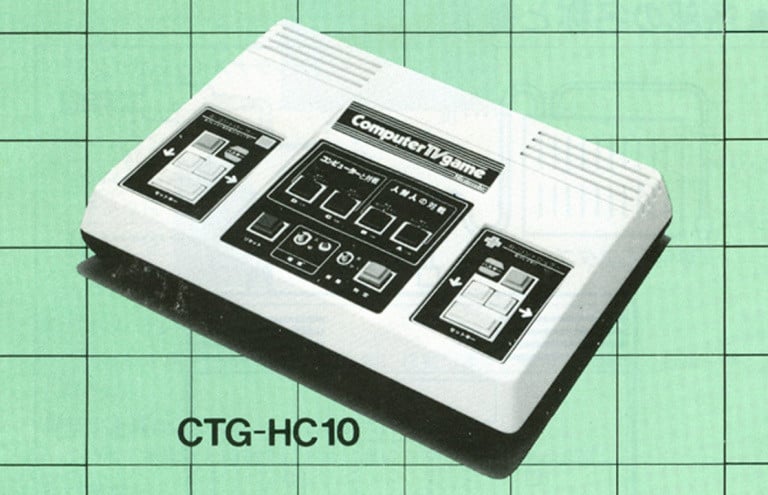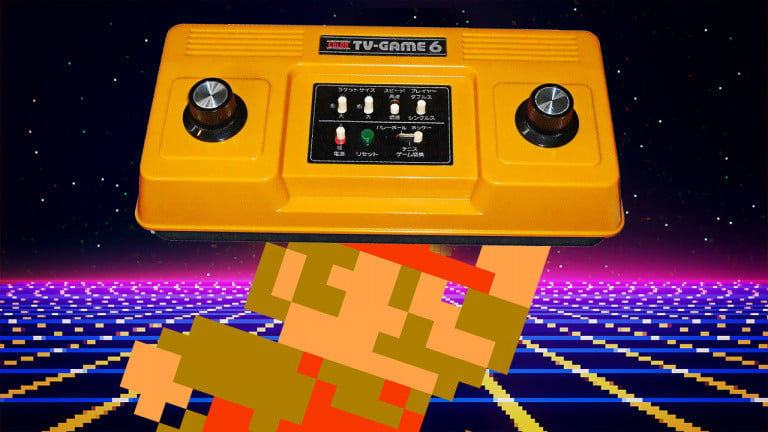Game news It is Nintendo's first video game console, and no, it's not the NES. It came out… in 1977!
Advertisement
After making erotic card games, but before the Famicom arrived in Japan, Nintendo designed various gaming experiences that connected to the television. Largely forgotten in the history of video games in favor of hardware such as the Odyssey or the Atari 2600, the Color-TVs were nevertheless the Kyoto firm's first real home consoles. They were a resounding success… and an abrupt end.
Advertisement
Sources:
– The forgotten ones of Playhistory (Omaké)
– The History of Nintendo (Omake)
Summary
- From gaming to video games
- Ja-PONG!
- Five little jumps then the big jump
From gaming to video games
Some estimate its birth around the 1950s, when electronic machines were modified by a few tinkerers to end up with strictly playful experiences. Others place its creation at the beginning of the 1970s, with the appearance of the first arcade terminals that launched a real industry. The video game has had many names who have carried its history, such as Steve Russel, Ralph Baer or Nolan Bushnell, and it is common to read that Nintendo launched the third generation of consoles with its very first attempt at a machine connected to a screen, the NES. However, since 1977, the manufacturer of cards and toys has been able to invite itself into hundreds of thousands of Japanese homes thanks to hardware connected to the television. The transition period took place with the Nintendo Color-TV.
The Kyoto firm's first attempt at the nascent video game industry is not called the Famicom, NES or Game and Watch, but the Nintendo Color-TV Game 6.. To succeed in the world of electronics that it does not master, the company calls on Mitsubishi Electronics who takes care of the components of the device. Released in June 1977 at a price of 9,800 yen, the very first games console of the Japanese manufacturer has a major advantage: it displays color on televisions!

Ja-PONG!
The Color-TV Game 6 comes with six games that turn out to be Pong clones. For fear of seeing Magnavox, burned by the Atari affair, attack them for having “borrowed” the concept, Nintendo signed a contract with the firm which made the Odyssey in the early 1970s. The group thus had the authorization to produce its own bike legally copying the famous tennis game.

In concrete terms, the Game 6 works using batteries and players move their virtual racket using wheels attached directly to the console, which therefore acts as a shared controller.. Far from being practical, this way of playing will be changed with the Color-TV Game 15, an improved version of the machine (which only arrives a month later) this time offering two wired controllers. It's better.

To promote this funny game that connects to the TV, a concept that was not common in Japan at that time, Nintendo chose the daily Yomiuri Shimbun and chose a strategic place in the newspaper: the page reserved for television programs.. In his video “The forgotten ones of Playhistory #Special”, Florent Gorges reveals the very first advertisement for the console which can be found in the issue of July 20, 1977. We see a family playing the famous machine on a good old cathode TV, with this slogan at the top: “don't just watch TV, play with it”.
A message of formidable effectiveness, since Nintendo regularly congratulates itself on the sales of its Color-TVs in the columns of the newspaper. On November 21, 1977, the Kyoto firm said it had reached 580,000 machines sold just 5 months after it was put on sale. A figure which climbs to reach 840,000 consoles distributed on March 21, 1978. Big N mentions “undisputed popularity”. “Our products are of quality because they have passed the most rigorous tests with flying colors and your trust is proof of this.”, we read in a paper advertisement unearthed by Florent Gorges.
Five little jumps then the big jump
It is sometimes said that this incredible success pushed Nintendo to immediately move on to something more serious and release its NES. But before Mario jumped on Goombas to roll over the competition, his creators persisted with Color-TVsIn 1978, the manufacturer designed the Color TV Game Racing 112 with, as its name suggests, a racing game with 112 possible combinations.

The console features a front-facing steering wheel that serves as a controller for the player, as well as a gear lever and a series of buttons. Forget the subjective view, the races are in top-down view and can be played by up to two people by connecting controllers to the sides of the machine. As an aside, Racing 112 will make a small appearance in one of the mini-games of WarioWare, Inc. on GBA.
See Nintendo Switch OLED on Amazon
In 1979, the Color-TV Game Block Kuzushi arrived. Known for being the first machine entirely made by Nintendo, it allowed a certain Shigeru Miyamoto to prove himself. Mario's dad actually took care of its design, and imagined a console/controller that is easy to use whether you are right-handed or left-handed. The Color-TV Game Block Kuzushi offers variations of Breakout (brick-breaking game), a very popular software in Japan in the late 1970s.

Nintendo seems to have found the right idea that pays off every time: a machine that is inexpensive to produce and brings in a lot of money, and whose concept can be adapted in many ways. But a year later, the misadventures of the Computer TV Game will turn the manufacturer's plans upside down.

Released in 1980 at a price of 48,000 yen, making it the most expensive of all the machines in the range, the Computer TV Game was the last Color-TV to be found in Japanese stores. After Pong, the race and the brick breaker, this time it is Othello who is put in the spotlight. Or something that vaguely resembles it: the technical delay of the machine forces the manufacturer to replace the pretty colored circles of the base game with crosses and squares.

Expensive, outdated in its architecture, suffering from a processor so underperforming that the AI is disconcertingly easy to beat, the Computer TV Game is not meeting with the expected success.. So much so that it dealt a fatal blow to Color-TV. Nintendo would continue the experiment with electronic oddities with the Game & Watch, while the Japanese firm would launch into the world of game consoles – with cartridges – in 1983 via the Famicom/NES. This would be the beginning of a global success that would popularize series that are still in the news today with Super Mario Bros., The Legend of Zelda and Metroid.
This page contains affiliate links to certain products that JV has selected for you. Each purchase you make by clicking on one of these links will not cost you more, but the e-merchant will pay us a commission. The prices indicated in the article are those offered by the merchant sites at the time of publication of the article and these prices are likely to vary at the sole discretion of the merchant site without JV being informed.
Learn more.
